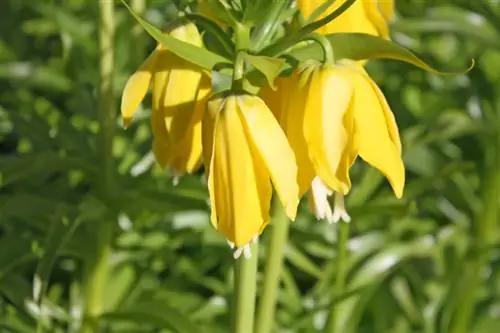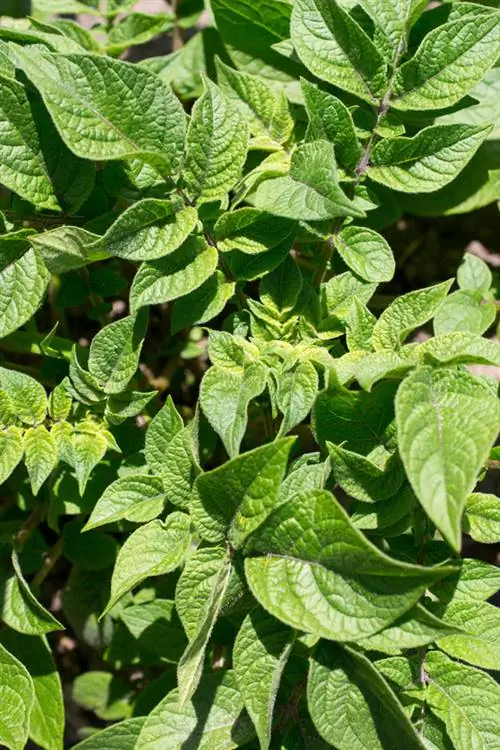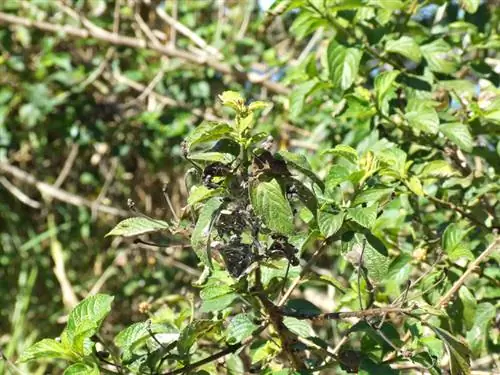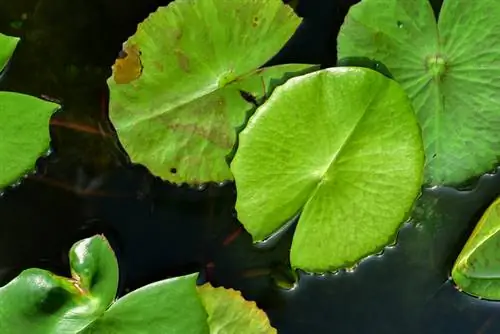- Author admin [email protected].
- Public 2023-12-16 16:46.
- Last modified 2025-01-23 11:20.
With good choice of location and care, the imperial crown (Fritillaria imperialis) can enrich the color palette in the flower bed for many years in the same location during the flowering period without transplanting. There can be various reasons for plants not flowering.

Why isn't my imperial crown blooming?
If an imperial crown does not bloom, this may be due to an unsuitable location, waterlogging, nutritional deficiencies or pests such as lilies. Improving soil conditions, location and plant care can promote flower production.
Basic factors when choosing a location
So that the imperial crown can gain enough energy from the sunlight and the nutrients in the soil for the new inflorescences that grow every year, it depends on a location that is as sunny as possible with permeable soil. If the garden soil is heavy, you can take the following measures to combat the risk of rot on the imperial crown bulbs:
- loose up soils that are too heavy with seasoned compost
- When planting, line the bottom of the planting hole with some sand
- plant the flattened bulbs at a slight angle to avoid water residue on the top
In addition, the imperial crown bulbs are planted relatively deep between July and September at a depth of around 20 to 30 centimeters below the surface of the earth.
The imperial crown bulbs overwinter in the ground
Some overzealous gardeners dig the imperial crown bulbs out of the ground after the flowering period in order to overwinter them dry indoors. However, this is wrong, as the imperial crown onions are hardy in the ground without any problems and must not be left completely dry over the winter. In addition, newly planted or transplanted onions should be put into the ground in the summer if possible or by September at the latest so that they can spread their roots into the surrounding soil before winter.
Identifying and eliminating deficiencies and pests
On the one hand, imperial crowns are a popular joker against an infestation of voles in the garden, as they cannot stand the intense smell of the plants. On the other hand, the imperial crown itself is not entirely immune to pests. If you can rule out waterlogging or a location that is too shady and nutrient-poor as a reason for the lack of flowers, you should check the flower bed for an infestation of lily chickens. These approximately 8 millimeters long, red-colored beetles damage the leaves of the imperial crown as larvae and beetles and can be controlled by collecting them.
Tips & Tricks
If the imperial crown bulbs have not produced any flowers for several years despite suitable location factors, then they should be dug up for inspection. It is possible that the onion has formed brood bulbs in the course of propagation, which can then be replanted in another place.






